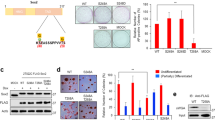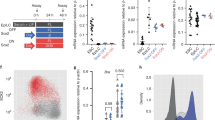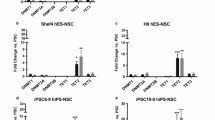Abstract
SOX2 is a key regulator of multiple types of stem cells, especially embryonic stem cells (ESCs) and neural progenitor cells (NPCs). Understanding the mechanism underlying the function of SOX2 is of great importance for realizing the full potential of ESCs and NPCs. Here, through genome-wide comparative studies, we show that SOX2 executes its distinct functions in human ESCs (hESCs) and hESC-derived NPCs (hNPCs) through cell type- and stage-dependent transcription programs. Importantly, SOX2 suppresses non-neural lineages in hESCs and regulates neurogenesis from hNPCs by inhibiting canonical Wnt signaling. In hESCs, SOX2 achieves such inhibition by direct transcriptional regulation of important Wnt signaling modulators, WLS and SFRP2. Moreover, SOX2 ensures pluripotent epigenetic landscapes via interacting with histone variant H2A.Z and recruiting polycomb repressor complex 2 to poise developmental genes in hESCs. Together, our results advance our understanding of the mechanism by which cell type-specific transcription factors control lineage-specific gene expression programs and specify cell fate.
Similar content being viewed by others
Log in or create a free account to read this content
Gain free access to this article, as well as selected content from this journal and more on nature.com
or
References
Sarkar A, Hochedlinger K . The sox family of transcription factors: versatile regulators of stem and progenitor cell fate. Cell Stem Cell 2013; 12:15–30.
Graham V, Khudyakov J, Ellis P, Pevny L . SOX2 functions to maintain neural progenitor identity. Neuron 2003; 39:749–765.
Adachi K, Suemori H, Yasuda SY, Nakatsuji N, Kawase E . Role of SOX2 in maintaining pluripotency of human embryonic stem cells. Genes Cells 2010; 15:455–470.
Fong H, Hohenstein, KA, Donovan PJ . Regulation of self-renewal and pluripotency by Sox2 in human embryonic stem cells. Stem Cells 2008; 26:1931–1938.
Wang Z, Oron E, Nelson B, Razis S, Ivanova N . Distinct lineage specification roles for NANOG, OCT4, and SOX2 in human embryonic stem cells. Cell Stem Cell 2012; 10:440–454.
Cimadamore F, Amador-Arjona A, Chen C, Huang CT, Terskikh AV . SOX2-LIN28/let-7 pathway regulates proliferation and neurogenesis in neural precursors. Proc Natl Acad Sci USA 2013; 110:E3017–E3026.
Lodato MA, Ng CW, Wamstad JA, et al. SOX2 co-occupies distal enhancer elements with distinct POU factors in ESCs and NPCs to specify cell state. PLoS Genet 2013; 9:e1003288.
Mistri TK, Devasia AG, Chu LT, et al. Selective influence of Sox2 on POU transcription factor binding in embryonic and neural stem cells. EMBO Rep 2015; 16:1177–1191.
Davidson KC, Jamshidi P, Daly R, Hearn MT, Pera MF, Dottori M . Wnt3a regulates survival, expansion, and maintenance of neural progenitors derived from human embryonic stem cells. Mol Cell Neurosci 2007; 36:408–415.
Vanderhaeghen P . Wnts blow on NeuroD1 to promote adult neuron production and diversity. Nat Neurosci 2009; 12:1079–1081.
Sato N, Meijer L, Skaltsounis L, Greengard P, Brivanlou AH . Maintenance of pluripotency in human and mouse embryonic stem cells through activation of Wnt signaling by a pharmacological GSK-3-specific inhibitor. Nat Med 2004; 10:55–63.
Ullmann U, Gilles C, De Rycke M, Van de Velde H, Sermon K, Liebaers I . GSK-3-specific inhibitor-supplemented hESC medium prevents the epithelial-mesenchymal transition process and the up-regulation of matrix metalloproteinases in hESCs cultured in feeder-free conditions. Mol Hum Reprod 2008; 14:169–179.
Davidson KC, Adams AM, Goodson JM, et al. Wnt/beta-catenin signaling promotes differentiation, not self-renewal, of human embryonic stem cells and is repressed by Oct4. Proc Natl Acad Sci USA 2012; 109:4485–4490.
Singh AM, Reynolds D, Cliff T, et al. Signaling network crosstalk in human pluripotent cells: a Smad2/3-regulated switch that controls the balance between self-renewal and differentiation. Cell Stem Cell 2012; 10:312–326.
Kurek D, Neagu A, Tastemel M, et al. Endogenous WNT signals mediate BMP-induced and spontaneous differentiation of epiblast stem cells and human embryonic stem cells. Stem Cell Reports 2015; 4:114–128.
Moya N, Cutts J, Gaasterland T, Willert K, Brafman DA . Endogenous WNT signaling regulates hPSC-derived neural progenitor cell heterogeneity and specifies their regional identity. Stem Cell Reports 2014; 3:1015–1028.
Bengoa-Vergniory N, Gorrono-Etxebarria I, Gonzalez-Salazar I, Kypta RM . A switch from canonical to noncanonical Wnt signaling mediates early differentiation of human neural stem cells. Stem Cells 2014; 32:3196–3208.
Agathocleous M, Iordanova I, Willardsen MI, et al. A directional Wnt/beta-catenin-Sox2-proneural pathway regulates the transition from proliferation to differentiation in the Xenopus retina. Development 2009; 136:3289–3299.
Mendenhall EM, Bernstein BE . Chromatin state maps: new technologies, new insights. Curr Opin Genet Dev 2008; 18:109–115.
Meshorer E, Misteli T . Chromatin in pluripotent embryonic stem cells and differentiation. Nat Rev Mol Cell Biol 2006; 7:540–546.
Lee TI, Jenner RG, Boyer LA, et al. Control of developmental regulators by Polycomb in human embryonic stem cells. Cell 2006; 125:301–313.
Subramanian V, Fields PA, Boyer LA . H2A.Z: a molecular rheostat for transcriptional control. F1000Prime Rep 2015; 7:01.
Chen P, Wang Y, Li G . Dynamics of histone variant H3.3 and its coregulation with H2A.Z at enhancers and promoters. Nucleus 2014; 5:21–7.
Hu G, Cui K, Northrup D, et al. H2A.Z facilitates access of active and repressive complexes to chromatin in embryonic stem cell self-renewal and differentiation. Cell Stem Cell 2013; 12:180–192.
Jin C, Zang C, Wei G, et al. H3.3/H2A.Z double variant-containing nucleosomes mark 'nucleosome-free regions' of active promoters and other regulatory regions. Nat Genet 2009; 41:941–945.
Ku M, Jaffe JD, Koche RP, et al. H2A.Z landscapes and dual modifications in pluripotent and multipotent stem cells underlie complex genome regulatory functions. Genome Biol 2012; 13:R85.
Zhou J, Su P, Li D, Tsang S, Duan E, Wang F . High-efficiency induction of neural conversion in human ESCs and human induced pluripotent stem cells with a single chemical inhibitor of transforming growth factor beta superfamily receptors. Stem Cells 2010; 28:1741–1750.
Chambers SM, Fasano CA, Papapetrou EP, Tomishima M, Sadelain M, Studer L . Highly efficient neural conversion of human ES and iPS cells by dual inhibition of SMAD signaling. Nat Biotechnol 2009; 27:275–280.
Zhou Y, Jiang H, Gu J, Tang Y, Shen N, Jin Y . MicroRNA-195 targets ADP-ribosylation factor-like protein 2 to induce apoptosis in human embryonic stem cell-derived neural progenitor cells. Cell Death Dis 2013; 4:e695.
Ziller MJ, Edri R, Yaffe Y, et al. Dissecting neural differentiation regulatory networks through epigenetic footprinting. Nature 2015; 518:355–359.
Ong CT, Corces VG . Enhancer function: new insights into the regulation of tissue-specific gene expression. Nat Rev Genet 2011; 12:283–293.
Thomson JA, Itskovitz-Eldor J, Shapiro SS, et al. Embryonic stem cell lines derived from human blastocysts. Science 1998; 282:1145–1147.
Li C, Yang Y, Lu X, et al. Efficient derivation of Chinese human embryonic stem cell lines from frozen embryos. In Vitro Cell Dev Biol Anim 2010; 46:186–191.
Carey BW, Finley LW, Cross JR, Allis CD, Thompson CB . Intracellular alpha-ketoglutarate maintains the pluripotency of embryonic stem cells. Nature 2015; 518:413–416.
Zhang J, Nuebel E, Daley GQ, Koehler CM, Teitell MA . Metabolic regulation in pluripotent stem cells during reprogramming and self-renewal. Cell Stem Cell 2012; 11:589–595.
Zhang D, Zhao T, Ang HS, et al. AMD1 is essential for ESC self-renewal and is translationally down-regulated on differentiation to neural precursor cells. Genes Dev 2012; 26:461–473.
Assou S, Cerecedo D, Tondeur S, et al. A gene expression signature shared by human mature oocytes and embryonic stem cells. BMC Genomics 2009; 10:10.
Masui S, Nakatake Y, Toyooka Y, et al. Pluripotency governed by Sox2 via regulation of Oct3/4 expression in mouse embryonic stem cells. Nat Cell Biol 2007; 9:625–635.
Cruciat CM, Niehrs C . Secreted and transmembrane wnt inhibitors and activators. Cold Spring Harb Perspect Biol 2013; 5:a015081.
Port F, Kuster M, Herr P, et al. Wingless secretion promotes and requires retromer-dependent cycling of Wntless. Nat Cell Biol 2008; 10:178–185.
Esteve P, Sandonis A, Ibanez C, Shimono A, Guerrero I, Bovolenta P . Secreted frizzled-related proteins are required for Wnt/beta-catenin signalling activation in the vertebrate optic cup. Development 2011; 138:4179–4184.
Fontenot E, Rossi E, Mumper R, et al. A novel monoclonal antibody to secreted frizzled-related protein 2 inhibits tumor growth. Mol Cancer Ther 2013; 12:685–695.
Fang X, Yoon JG, Li L, et al. Landscape of the SOX2 protein-protein interactome. Proteomics 2011; 11:921–934.
Taranova OV, Magness ST, Fagan BM, et al. SOX2 is a dose-dependent regulator of retinal neural progenitor competence. Genes Dev 2006; 20:1187–1202.
Fu J, Jiang M, Mirando AJ, Yu HM, Hsu W . Reciprocal regulation of Wnt and Gpr177/mouse Wntless is required for embryonic axis formation. Proc Natl Acad Sci USA 2009; 106:18598–18603.
Satoh W, Gotoh T, Tsunematsu Y, Aizawa S, Shimono A . Sfrp1 and Sfrp2 regulate anteroposterior axis elongation and somite segmentation during mouse embryogenesis. Development 2006; 133:989–999.
Yang PT, Anastas JN, Toroni RA, et al. WLS inhibits melanoma cell proliferation through the beta-catenin signalling pathway and induces spontaneous metastasis. EMBO Mol Med 2012; 4:1294–1307.
Voloshanenko O, Erdmann G, Dubash TD, et al. Wnt secretion is required to maintain high levels of Wnt activity in colon cancer cells. Nat Commun 2013; 4:2610.
Augustin I, Goidts V, Bongers A, et al. The Wnt secretion protein Evi/Gpr177 promotes glioma tumourigenesis. EMBO Mol Med 2012; 4:38–51.
Shih YL, Hsieh CB, Yan MD, et al. Frequent concomitant epigenetic silencing of SOX1 and secreted frizzled-related proteins (SFRPs) in human hepatocellular carcinoma. J Gastroenterol Hepatol 2013; 28:551–559.
Creyghton MP, Markoulaki S, Levine SS, et al. H2AZ is enriched at polycomb complex target genes in ES cells and is necessary for lineage commitment. Cell 2008; 135:649–661.
Li Z, Gadue P, Chen K, et al. Foxa2 and H2A.Z mediate nucleosome depletion during embryonic stem cell differentiation. Cell 2012; 151:1608–1616.
Wu T, Liu Y, Wen D, et al. Histone variant H2A.X deposition pattern serves as a functional epigenetic mark for distinguishing the developmental potentials of iPSCs. Cell Stem Cell 2014; 15:281–294.
Wang J, Qiao M, He Q, et al. Pluripotency activity of Nanog requires biochemical stabilization by variant histone protein H2A.Z. Stem Cells 2015.
Ng SY, Bogu GK, Soh BS, Stanton LW . The long noncoding RNA RMST interacts with SOX2 to regulate neurogenesis. Mol Cell 2013; 51:349–359.
Acknowledgements
This study was supported by grants from the Chinese Academy of Science (XDA01010102), Ministry of Science and Technology of China (2011CB965101, 2013CB967101) and the National Natural Science Foundation (31471393, 91419309, 31322031, 31371288 and 31571365).
Author information
Authors and Affiliations
Corresponding authors
Additional information
( Supplementary information is linked to the online version of the paper on the Cell Research website.)
Supplementary information
Supplementary information, Figure S1
SOX2 binds to genes involved in diverse aspects of hESCs and hNPCs maintenance. Related to Figure 1. (PDF 512 kb)
Supplementary information, Figure S2
SOX2 regulates self-renewal and protects survival, proliferation and cell cycle in hESCs and hESC-derived hNPCs. Related to Figure 3. (PDF 733 kb)
Supplementary information, Figure S3
Knock down of SOX2 leads to enhanced non-neural lineage differentiation by activating the Wnt pathway. Related to Figure 4. (PDF 575 kb)
Supplementary information, Figure S4
SFRP2 and WLS are two major SOX2 targets in hESCs, functioning as WNT antagonist and agonist, respectively, in mediating Wnt pathway induced non-neural lineage differentiation. Related to Figure 6. (PDF 661 kb)
Supplementary information, Figure S5
SOX2 and H2A.Z co-localize to development genes for the establishment of H3K27me3 modification. Related to Figure 7. (PDF 546 kb)
Supplementary information, Figure S6
Species retained SOX2 peaks contain a higher percentage of promoter peaks than turnover or unique peaks. Related to Figure 8. (PDF 411 kb)
Supplementary information, Data S1
Detailed Materials and Methods (PDF 143 kb)
Rights and permissions
About this article
Cite this article
Zhou, C., Yang, X., Sun, Y. et al. Comprehensive profiling reveals mechanisms of SOX2-mediated cell fate specification in human ESCs and NPCs. Cell Res 26, 171–189 (2016). https://doi.org/10.1038/cr.2016.15
Received:
Revised:
Accepted:
Published:
Issue date:
DOI: https://doi.org/10.1038/cr.2016.15
Keywords
This article is cited by
-
PVT1/miR-136/Sox2/UPF1 axis regulates the malignant phenotypes of endometrial cancer stem cells
Cell Death & Disease (2023)
-
Epigenetic and molecular coordination between HDAC2 and SMAD3-SKI regulates essential brain tumour stem cell characteristics
Nature Communications (2023)
-
Static Magnetic Fields Promote Generation of Muscle Lineage Cells from Pluripotent Stem Cells and Myoblasts
Stem Cell Reviews and Reports (2023)
-
The H2A.Z-KDM1A complex promotes tumorigenesis by localizing in the nucleus to promote SFRP1 promoter methylation in cholangiocarcinoma cells
BMC Cancer (2022)
-
p21-activated kinase 2 binds to transcription factor SOX2 and up-regulates DEK to promote the progression of lung squamous cell carcinoma
Laboratory Investigation (2022)



